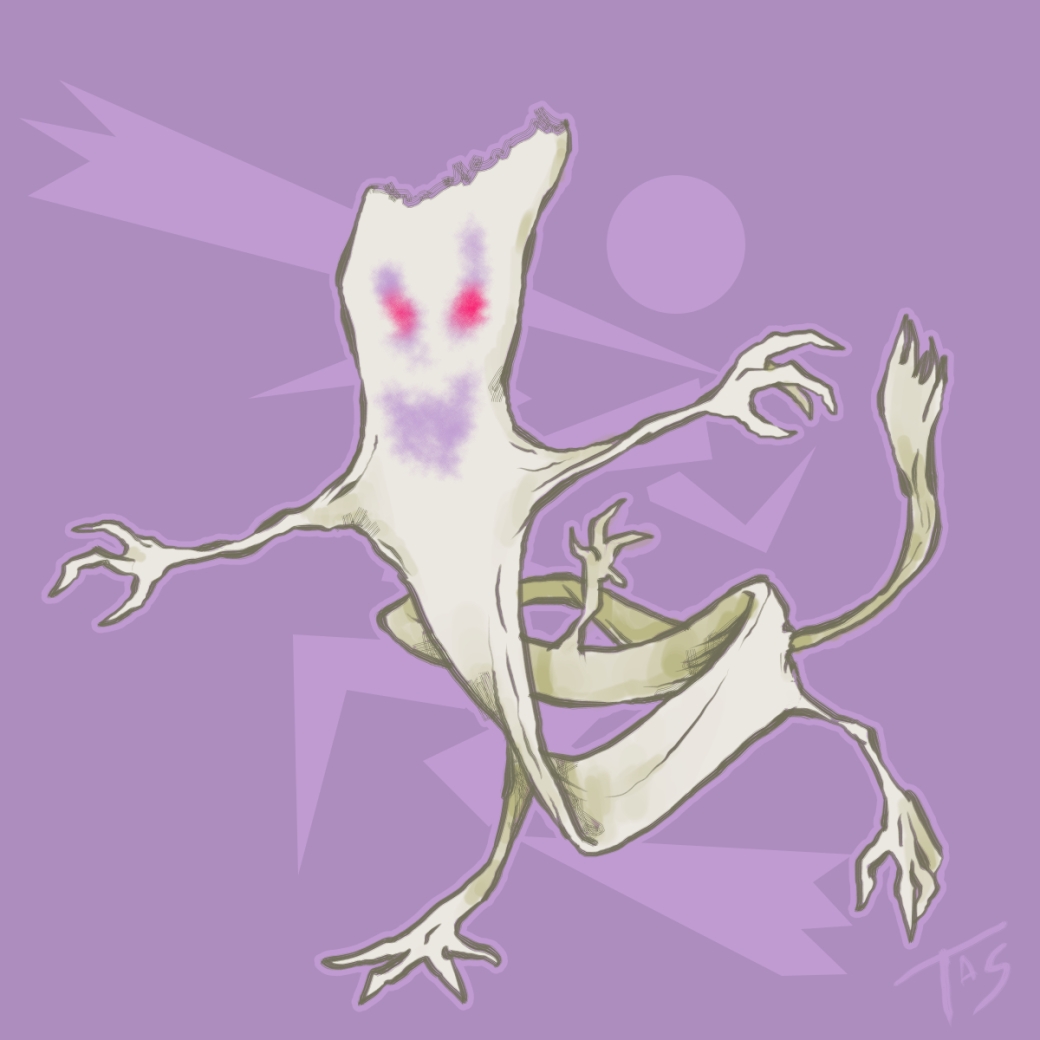
Ittan-momen
Region of origin: Kagoshima, Japan
A possessed bolt of cotton cloth, the ittan-momen is a tsukumogami, a spirit born of a disused or forgotten household items, who glides silently through the night sky looking for victims to prey upon. Unlike most tsukumogami or yokai who have a tendency to be mischievous but harmless to people, the ittan-momen is particularly vicious and will wrap itself around a person’s head, smothering them to death.








